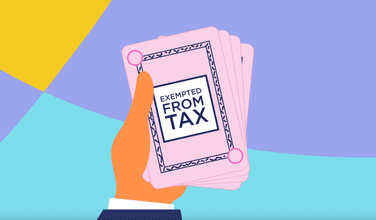- Osome Blog HK
- How To Find Your Company's Unified Social Credit Code in China
How To Find Your Company's Unified Social Credit Code in China
- Modified: 1 October 2024
- 7 min read
- Money Talk


Jon Mills
Business Writer
Jon's background is in copy and content writing for brands. He relishes writing educational and entertaining content. He's told unique stories in creative ways, and has added value to products in the luxury sector. Now, his stories bring the advice and journeys of Osome's accounting experts and small business owners to life, hoping to inspire entrepreneurs to be ambitious, set their sights high, and take pride in their growing businesses.
If you’re a company operating in China, you may have heard about the Unified Social Credit System. This system plays a pretty vital role in regulating businesses and tracking their activities.
To find your way around this system successfully, one of the key things you need to know is your Company's Unified Social Credit Code.
In this article, we’ll explain what the Unified Social Credit System is, its importance, and provide you with steps on how to locate your Company's Unified Social Credit Code.
Understanding the Unified Social Credit System
The Unified Social Credit System is an all-encompassing framework introduced by the Chinese government to monitor and regulate businesses operating within the country. It aims to promote transparency, encourage trustworthiness, and maintain a level playing field for all businesses. From tracking financial records to assessing business conduct, the system serves as a comprehensive credit evaluation tool.
In recent years, China has experienced rapid economic growth and development. With a vast number of businesses emerging in various sectors, the need for effective regulation and oversight has become paramount. The Unified Social Credit System is the government's response to this challenge, providing a mechanism to evaluate the performance and integrity of businesses across the nation.
One of the key features of the Unified Social Credit System is its ability to track financial records. By linking businesses' financial data to their credit profiles, the system provides a holistic view of their financial health. This information is crucial for investors, lenders, and other stakeholders who rely on accurate and up-to-date financial data to make informed decisions.
The Unified Social Credit System goes beyond financial records, and into the realm of business conduct. It evaluates factors such as compliance with regulations, adherence to ethical standards, and customer satisfaction. This multifaceted approach ensures that businesses are not only financially sound but also operate in a manner that is beneficial to society as a whole.
With the Unified Social Credit System in place, businesses are incentivized to maintain high levels of trustworthiness and integrity. Positive credit ratings can unlock a range of benefits, including access to preferential government policies, easier access to financing, and enhanced reputation. But businesses with poor credit ratings may face restrictions and increased scrutiny.
It’s worth noting that the Unified Social Credit System is not without its critics. Some argue that it gives the government excessive control and could potentially be used to suppress dissent or stifle innovation. However, proponents of the system argue that it is necessary to ensure a fair and transparent business environment, where all businesses can thrive based on their merits.
What Is a Unified Social Credit Code?
A Unified Social Credit Code, also known as a Business License, is a unique 18-digit number assigned to each registered company in China. Think of it as your company's identification number within the Unified Social Credit System. This code is used by government agencies, financial institutions, and other businesses to verify your company's details and conduct due diligence.
In China, the Unified Social Credit Code plays a crucial role in the business landscape. It serves as a comprehensive record of a company's operations, financial history, and legal status. With this code, businesses can easily access important information about other companies, such as their registration details, shareholders, and legal representatives.
Getting a Unified Social Credit Code is a necessary step for any company looking to operate in China. The process involves registering with the local Administration for Industry and Commerce (AIC) or its equivalent. Once registered, the company will be issued a unique code that will be used for various purposes, including tax registration, to open a bank account, and engaging in commercial activities.
The Unified Social Credit Code not only simplifies administrative procedures but also enhances transparency and trust in the Chinese business environment. By having a standardised identification system, the Chinese government aims to promote fair competition, prevent fraud, and improve the overall efficiency of business operations.
Furthermore, the Unified Social Credit System, of which the code is a part, goes beyond just business identification. It is a comprehensive framework that encompasses various aspects of social and economic activities in China. The system collects and integrates data from multiple sources, including government departments, financial institutions, and public records, to create a comprehensive profile of individuals and organisations.
This extensive database enables authorities to evaluate the creditworthiness of companies and individuals, which can have significant implications for their access to credit, government services, and even social privileges. It is worth noting that the Unified Social Credit System has been a subject of debate, with concerns raised about potential privacy issues and the potential for abuse of power.
Despite the controversies surrounding the Unified Social Credit System, it remains an integral part of doing business in China. Companies operating in the country must comply with the regulations and requirements set forth by the system to ensure smooth operations and avoid any legal repercussions.
Importance of the Unified Social Credit Code
Having a clear understanding of your Company's Unified Social Credit Code is essential for several reasons:
- It’s a requirement for various business transactions, including opening bank accounts, entering into contracts, and filing taxes.
- It acts as a trust indicator for potential partners, clients, and investors.
- It allows you to access and benefit from governmental support programs, incentives, and subsidies.
Steps To Locate Your Company's Unified Social Credit Code
Now that you appreciate the significance of your Company's Unified Social Credit Code, let's dive into the steps to locate it.
Check official government documentation
The first step is to refer to official government documents related to your business's registration. These documents often include your Business License containing the Unified Social Credit Code. Check for any physical or digital copies you may have received during the registration process.
Visiting the State Administration for Market Regulation (SAMR) website
The State Administration for Market Regulation (SAMR) is China's principal regulatory body responsible for business registrations. It's like a one-stop-shop for businesses looking for their Unified Social Credit Code.
- Start by visiting the official SAMR website. It's user-friendly, though primarily in Mandarin, so you may need a translator or use browser-based translation tools.
- Navigate to the section dedicated to business searches or company inquiries.
- Enter your company name or any other relevant details. It's always good to be as precise as possible to narrow down the search results.
- Once you identify your company from the list, click on it. You should be able to view details including your Unified Social Credit Code.
Remember, always ensure you're on the official SAMR website and not a third-party or imitation site to ensure the information's authenticity.
Navigating the Public Credit Information System
China's Public Credit Information System is another excellent resource to search for your Unified Social Credit Code.
- Access the official portal, usually available in Mandarin.
- Look for a business search or inquiry section.
- As with the SAMR website, input your company's name or related specifics.
- Browse the results to find your company and the associated Unified Social Credit Code.
Using the Public Credit Information System not only gives you access to your company's code but also a broad overview of your company's credit standing, so it's a valuable tool to be familiar with.
Contacting local administration for industry and commerce (AIC)
If you are unable to locate your Company's Unified Social Credit Code through your own records, the next step is to reach out to the local Administration for Industry and Commerce (AIC). Their offices hold the official records of all registered companies in China and should be able to provide the necessary information. Prepare relevant company details, such as your company name, registration number, and any supporting documents, to facilitate their search.
Exploring regional AIC websites
Each province or city in China typically has its own AIC website dedicated to businesses within that region. If you're aware of the specific region where your company is registered, heading directly to the regional AIC site might speed up your search.
- Google the regional AIC website or ask a local contact for the URL.
- Navigate to the business search or company inquiry section.
- Input your company details to fetch the Unified Social Credit Code.
- If in doubt, most regional AIC sites also have helpline numbers or chat functions where you can ask for assistance.
Though regional AIC websites might be more localised and possibly less English-friendly, they often provide faster, region-specific results.
Consulting your business registration documents
In addition to your Business License, other registration documents may contain your Unified Social Credit Code. These documents could include your Articles of Association, Certificate of Approval, or any other official paperwork related to your company's establishment. Examine these documents carefully to locate the code.
Tips for Using Your Unified Social Credit Code
Once you have your Company's Unified Social Credit Code, here are some tips to make the most out of it:
Validating the code's authenticity
Ensure that the Unified Social Credit Code you have is legitimate and valid. You can cross-check it with the official government records or use online verification platforms provided by government agencies.
Ensuring consistency across platforms
When using your Unified Social Credit Code, make sure that the information associated with it remains consistent across different platforms and documents. Any discrepancies may lead to confusion or potential issues during business transactions.
By following these steps and tips, you can successfully locate and ue your Company's Unified Social Credit Code. Remember, understanding and complying with the requirements of the Unified Social Credit System is crucial for smooth business operations in China.
Conclusion
The Unified Social Credit Code isn't just a set of numbers — it's an identity, a testament to your company's legitimacy, and a key to seamless business operations in China. Knowing how to locate and effectively use this code puts you one step ahead in navigating China's intricate business landscape.
Whether you're looking to forge new partnerships, secure investments, or simply keep your operations running smoothly, this code is invaluable. With the tools and tips provided in Osome’s guide, you're well-equipped to locate, validate, and use your Company's Unified Social Credit Code to its fullest potential.
And remember, Osome has tips and tools to help you in all aspects of your business journey, including a bookkeeping for beginners guide.






